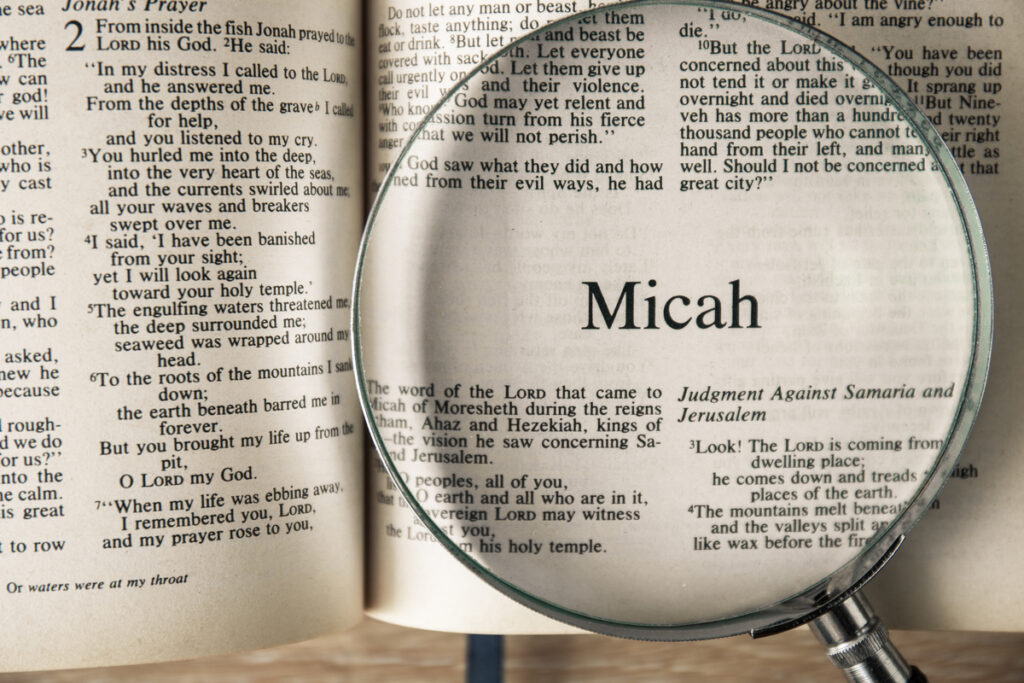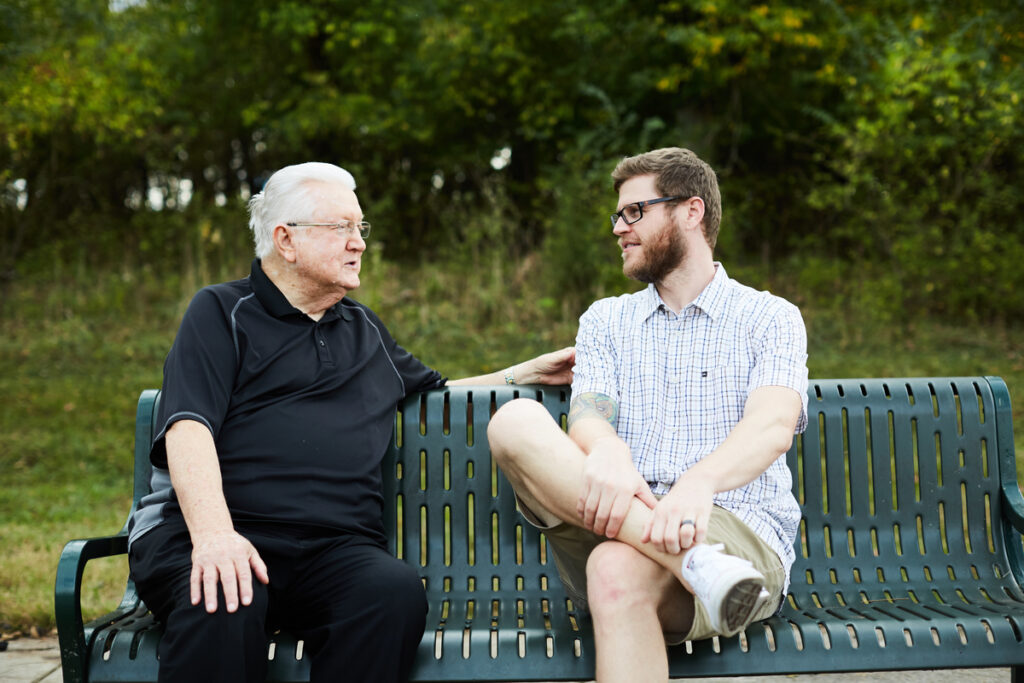Introduction
He has told you, O man, what is good;
and what does the Lord require of you
but to do justice, and to love kindness,
and to walk humbly with your God?
Micah 6:8, ESV
Many seasoned Christians would be able to quote for you a version of the three-fold instruction that is contained within the verse for how a Christian life should be conducted. But what does the instruction mean? The Christian and non-Christian alike could read on throughout the Scriptures to properly understand what loving kindness looks like and how one might walk in a humble manner. The reader could look to sources written after the New Testament to find how the Christian life is lived in a kind and humble way. But justice? How does the Christian define justice? Is it the justice that is talked about by ivy league academia? Is it the justice that the police enforce upon criminals? Where does the Christian find her understanding of justice? And not only justice but what about rights? Are rights and resultant justice, or lack thereof, found within the individual? Or somewhere else? In his work Justice: Rights and Wrongs, Nicholas Wolterstorff seeks to answer these questions and response to combatting understandings of justice and rights.
Summary
Justice: Rights and Wrongs begins with an in-depth discussion about two main views of how justice is conceived. Wolterstorff identifies the two views as justice as right order and justice as inherent rights. For someone who holds to a right order justice, it is understood that justice is based solely on societal order. “Natural law for the right ordering of society is what ultimately grounds justice, so it is said, not the inherent rights of members of society.”[1] Therefore, a collective ordering of society is the emphasis rather than on the rights of individuals. On the other hand, justice as inherent rights is the perspective that individual human beings have rights and should act justly because of their inherent value and worth. Wolterstorff believes this discussion is foundational to how individuals understand justice. By laying this foundation and combatting misunderstandings, he dives into a discussion arguing for a justice that is defined by God due to the inherent value in those made in His image.
In the first part of the book, which is title The Archaeology of Rights, Wolterstorff continues to center his writing on these two conceptions of justice, right order or inherent rights, and follows this discussion into what might be a surprising turn to many secular philosophers. Unabashedly, he ventures down a theistic hallway of this discussion of rights. This focus on the Judeo-Christian perspective of justice is imperative in the development of his thesis and therefore, a deep dive into the intricacies of how the Bible understands justice is necessary.
Wolterstorff methodically surveys Old Testament passages where the Hebrew concept and term mishpat is referenced. Some have concluded that the use of this term is merely legal (i.e., used in a legal court). Wolterstorff concludes otherwise, stating “And when the prophet speaks (Is. 42:1–4) in visionary language of the Servant establishing justice, I find it implausible to suppose that he means that the Servant will establish a fair legal system; he means that the Servant will bring about a general social condition in which there is no need for a judicial system to vindicate those who have been treated unjustly . . . . ”[2]
The second part of the book, Fusion of Narrative with Theory, does just as it is titled. Wolterstorff departs laying the foundation of justice and moves towards a theory of justice. Wolterstorff continues the survey of historical understanding of rights and justice as seen in Eudaimonism. He then addresses Augustine’s difficulty in accepting eudaimonistic understandings of a good life and his provision of an alternative that is understood to be the flourishing life. Although the whole section of this book cannot be fully summarized in this format, it is pertinent to understand that Augustine’s development of what a flourishing life looks like is pertinent to understanding where Wolterstorff is headed into his theory. In essence, Wolterstorff boils down Augustine’s rub against Eudaimonism in this simple sentence: “In this present life, love trumps tranquility.”[3]
The theme of a theistic approach to human rights and justice is picked back up in the final section of the book where Wolterstorff analyzes various groundings, both secular and theistic, in order to understand human rights. Wolterstorff notes that, in its most basic form, the most common approach to grounding human rights from a secularist point of view is dignity based with its root in capacities. Wolterstorff sees this as an obvious issue as they are bound to fail when fully fleshed out. There are unique scenarios in which secularists will have dignity-based understandings of rights but do not locate dignity in human capacity, which Wolterstorff admits is a step in the right direction, but it also ultimately fails.
In his final chapters, Wolterstorff lands at an unsurprising conclusion when considering the rest of his argument. He produces a thoroughly “theistic grounding of human rights.” Wolterstorff has already addressed the insufficiency of grounding human rights in one’s capacity, but he notices that theists, too, sometimes place one’s worth and imago Dei-ness in one’s capacity. Wolterstorff thus offers an alternative understanding of worth while still focusing on the imago Deitheological pillar that is upheld by Christians. He argues that the imago Dei is instead rooted in one’s bestowed worth, not from peers but from God. Wolterstorff lands the plane here in a most pastoral way. Other narratives are insufficient and can leave readers, philosophers and seekers yearning for more, but rights, value and a sense of justice rooted in an unchanging God that does not bestow value based off of capacity create a flourishing life.
Apologetic/Evangelistic Implications
A philosophical discussion and dissection of the concepts of justice and rights can easily slip into a solely academic discourse. But Wolterstorff prevents that from occurring and creates constant touchpoints of application for the Christian in his or her pursuit of justice. This is most easily seen in three key ways: one external, one internal and one that is both.
It is nearly impossible to have a discussion on justice in the 21st century without acknowledging the ever-present “social justice” movement taking place. Wolterstorff, too, does not shy away from acknowledging the growing concern amongst many related to justice for the marginalized. For much of the first part of his book, he argues that everyone has an innate sense of justice and must find its source somewhere. Justice is not source-less. As Wolterstorff addresses, many secularists may ground their sense of justice in a nebulous higher source of rights and justice. Others may cite the legal system as dictating what rights are bestowed upon its constituency. Wolterstorff’s argument provides a better way. Other theories hold very little water when fully fleshed out, but Christians can point to an omnipotent and just God as the giver of rights. What is agreed upon by almost all views is the fact that the source of rights is not found within. But if it is found externally, who dictates such rights? Finding God as our source of justice can satisfy our longings for true justice in the world.
Second, if justice comes from God, then the Church has no excuse to dismiss the pursuit of justice on earth. Wolterstorff spends a significant portion of his work discussing the “Quartet of the Vulnerable.” The widows, the orphans, the resident aliens and the poor. He notes that these four groups who suffer injustice are recipients of God’s concern and God’s followers’ care throughout Scripture, both Old and New Testament. What does this mean to the Christian today? The God of Moses is unchanging and His care and love of the most vulnerable today has also not changed and the people of God should act in accordance to this. If justice is a primary concern for God, it should also be a primary concern for God’s people.
Thirdly, Wolterstorff places Jesus at the center of justice with great reason. In an almost pastoral turn while discussing the presence of justice in the New Testament, he points to Christ as the impetus of justice. He explores this thought by writing, “That very same Jesus who is identified as the one sent by God to inaugurate the reign of justice himself became a victim of gross injustice.”[4] This, he states, “would have been profoundly ironic, with massive delusion at its core,” but the story is redeemed by the resurrection that occurred on the third day. Jesus experiences grave injustice, true. But He is also the victor who reigns and rules with justice. Wolterstorff goes on, “As it is, Jesus’ becoming the victim of injustice proved not the end of the story but a central episode in a larger story of victory rather than defeat for the cause of injustice.” Is this not a comfort to the hurting? Would this not be a balm for the one experiencing the wounds of injustice? “We do not have a high priest who is unable to sympathize with us in our weakness,” (Heb. 4:15).
In Wolterstorff’s eyes, in its properly ordered place for the Christian, justice fits snuggly like a perfectly cut puzzle piece. The Christian life, Wolterstorff would argue, is inconsistent without the presence and understanding of justice. Throughout his work, he points to the fact that without justice, there would be no need for forgiveness. If carried out to that conclusion, without forgiveness, there would be no need for a Savior. Christ’s example on the cross of making the wrong things right should give the Christ follower today a sure hope and strong desire to see the same done in our midst.
Notes:
[1] Nicholas Wolterstorff, Justice: Rights and Wrongs (Princeton, NJ: Princeton Univ. Press, 2008), 11.
[2] Wolterstorff, 74.
[3] Wolterstorff, 201.
[4] Wolterstorff, 129.
Published January 29, 2024




